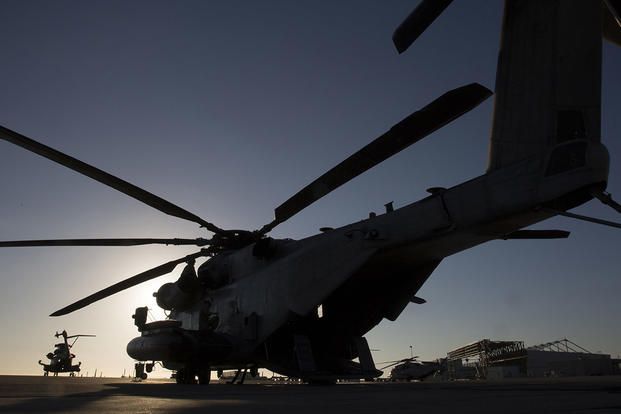SAN DIEGO — Marines with Marine Heavy Helicopter Squadron 466 and Marines with Combat Logistics Battalion 1 conducted external lifts at night aboard Marine Corps Base Camp Pendleton, California, Sept. 16.
During the four-hour training event, Marines with HMH-466 and CLB-1 repeatedly secured, lifted and released a 10,000-pound weight at night, when visibility was at its lowest.
“[We conduct] low light level externals when it’s as dark as it gets outside,” said Capt. Mike Dobrinen, adjutant and a CH-53E Super Stallion pilot with HMH-466. “It’s essential to the training of pilots, aircrew and the helicopter support team.”
Ground Marines formed multiple HSTs and took turns securing the loads throughout the night. According to Lance Cpl. Johnathon Carhart, a landing support specialist with CLB-1 and a Miami native, the training went well and accomplished several successful lifts.
“We do external-lift training once a week,” said Carhart. “This is [military occupational specialty] proficiency training for pilots and young Marines in HSTs.”
External lifts require extensive communication between Marines on the ground, aircrew and pilots, but low-light conditions increase the training’s complexity, said Dobrinen.
“The CH-53E Super Stallion is the heaviest lift asset in the U.S. military,” said Dobrinen. “[It’s the] exclusive heavy lift asset for the Marine Corps.”
Carhart explained the HST fastened the load to the Super Stallion using hooks and ensured line integrity during an external lift.
According to Dobrinen, the training honed each unit’s expertise and communication between Marines on the ground and in the aircraft.
“We work together as a team to simulate one of the more challenging things we do,” said Dobrinen. “It gives a great opportunity [for us] to build communication and the troop concept.”


























